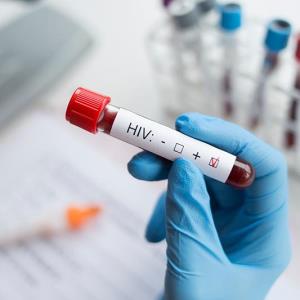The portable micro-PCR accurately determines HIV-1 and HIV-2 viral loads at the same time and can be deployed in remote places where HIV quantification is not feasible, reports a study. This novel device measures HIV viral loads using a TruePrep extractor device for isolating RNA.
“Our study suggests that this device is cost-effective, easy to handle, battery-operated, accurate, and can be performed for routine uses in remote places and places where well-developed infrastructure and sophisticated equipment are unavailable,” according to the researchers, led by Shyam Prakash from the Department of Laboratory Medicine, All India Institute of Medical Sciences (AIIMS), New Delhi, India.
Prakash and colleagues collected 5-ml blood samples at the blood collection centre at AIIMS and screened these for serology. They then compared HIV-1/2 RNA between qPCR and micro-PCR in these blood samples. [Sci Rep 2024;14:8700]
The micro-PCR assay of HIV-RNA was as reliable and accurate as that from real-time PCR (r, 0.99; p<0.002) and demonstrated good inter- and intra-assay reproducibility over a wide dynamic range (1.0 × 102–1.0 × 108 IU/ml). The linear dynamic range was 102–108 IU/ml.
Likewise, the clinical and analytical specificity of the micro-PCR assay was similar to that of qPCR (ie, 100 percent). Inter-assay coefficient of variation ranged from 0.02 percent to 0.46 percent, while that for intra-assay ranged from 1.17 percent to 3.15 percent.
“Moreover, due to the robust, simple, and empirical method, the Probit analysis has also been done for qPCR limits of detection (LOD) to avoid uncertainties in target recoveries,” Prakash said.
HIV-1/2 chip
Previous studies tried several methods to simplify PCR and real-time PCR platforms to develop nucleic acid amplification. The HIV-1/2 chip Truenat was recently deployed to detect hepatitis B virus (HBV) viral loads, diagnose HBV infection, and monitor drug efficacy. [Curr Protoc Microbiol 2018;51:e62; Biochemistry 2020;85:147-166]
In addition, the micro-PCR Truenat was also used to diagnose tuberculosis (sensitivity, 94.7 percent), malaria (sensitivity, 99.3 percent) papillomavirus (sensitivity, 97.5 percent), and Beta-CoV and SARS-CoV-2 (sensitivity, 100 percent). [Int J Mycobacteriol 2014;3:205-210; PLoS One 2016;11:1-14; JCO Glob Oncol 2020;doi:10.1200/go.20.00024; Indian J Med Res 2021;153:144-150]
“Truenat is a novel portable real-time micro-PCR similar to real-time PCR (Agilent),” Prakash said. “This device works on chip-based containing dried MgCl2, internal controls and dried RT-PCR reagents for real-time amplification to detect the HIV-1/2 virus.”
In Bland-Altmann plot analysis, viral loads from Truenat PCR “meet with the real-time PCR,” with mean differences of 0.36‒0.41 IU/ml from the micro-PCR devices for HIV-1 and 0.16‒0.19 log IU/ml for HIV-2.
“Our results have shown 100-percent sensitivity and specificity compared to real-time PCR,” the researchers said.
The tests demonstrated satisfactory linearity and reproducibility in triplicates from 2‒6 log copies/mL. which reached the significant range for clinical decision making. Such accuracy made the device reliable for treatment monitoring of people living with HIV.
“Furthermore, the focus must be heavily oriented to reach this technology to remote areas, which will help to assess early detection of care for multimorbidity and good quality of life,” Prakash said. “Overall, this device will help to monitor the viral load of HIV-1/2 and provide insight into developing therapeutic and preventive vaccines, novel immunotherapies and an early cure for HIV-infected patients.”

